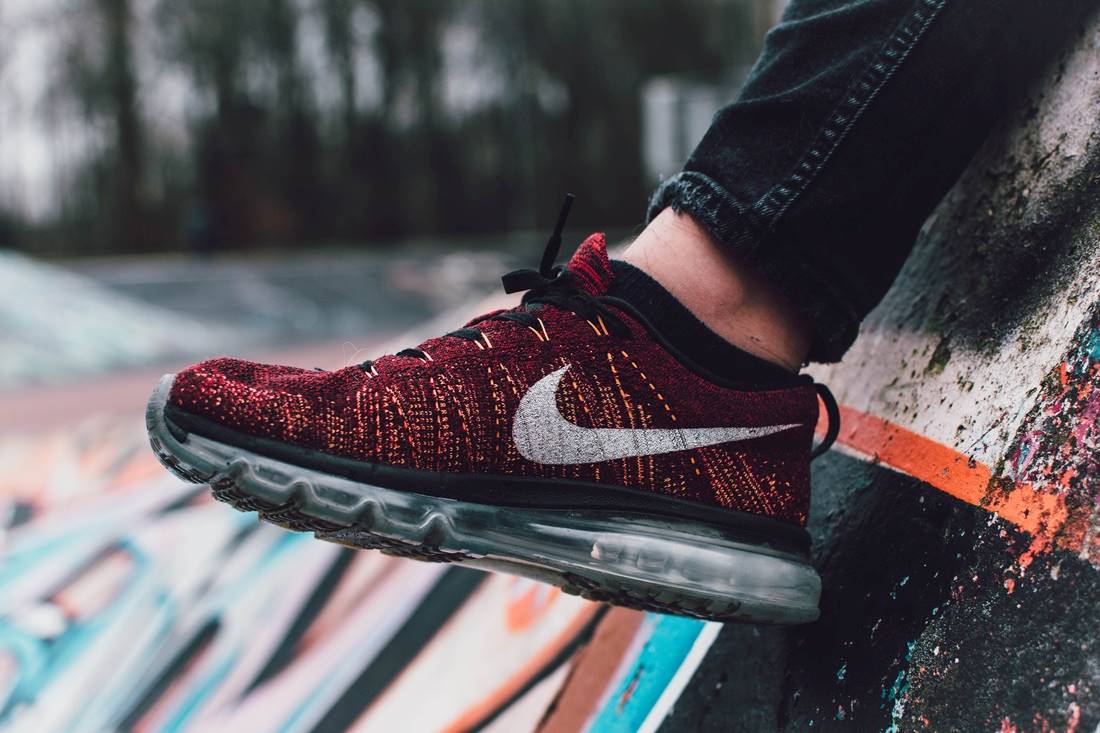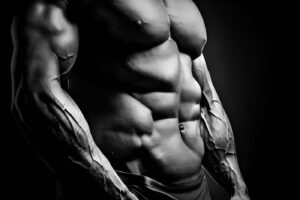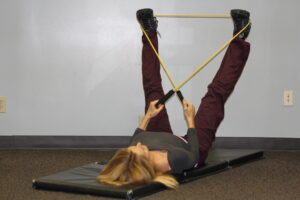Introduction
When it comes to enhancing your workout performance and safeguarding your foot health, the importance of selecting the right workout shoes cannot be overstated. It’s like choosing the best partner for your exercise journey; the right shoes can significantly uplift your efficiency and help prevent those nagging injuries that no athlete or fitness enthusiast ever wants to face. This “Workout Shoes Guide” is your go-to source for understanding how your footwear impacts your exercise routine. From running on a trail to lifting weights in the gym, every activity demands a shoe that complements the movement, supports your foot, and, yes, also ticks the box for durability. Let’s embark on this journey to find your perfect workout companion, ensuring your feet are as happy and healthy as can be.
Understanding Exercise-Specific Shoe Selection
Exercise Variety: Matching Shoes to Activities
Selecting workout shoes is not a one-size-fits-all affair. The terrain, impact level, and nature of your exercise all play crucial roles in determining the ideal footwear. For instance, the demands of a high-intensity interval training (HIIT) session are vastly different from those of a long-distance run. This segment highlights the importance of “choosing athletic footwear” that aligns with your workout regimen.
Running shoes are designed with forward motion in mind, offering ample cushioning to absorb the shock that comes with pounding the pavement. On the flip side, cross-training shoes offer more lateral support, making them the go-to for gym enthusiasts who engage in a variety of workouts including lifting, agility training, and the occasional treadmill sprint.
Understanding the nuances of each activity and selecting exercise shoes that offer the right balance of support, flexibility, and cushioning can significantly enhance your performance and reduce the risk of injury. Always consider the specific demands of your preferred workouts when shopping for new footwear.
Arch Matters: Finding the Right Support

The foundation of every great workout begins with your feet, and more specifically, your arches. Foot arch support is paramount in choosing the right workout shoes. Whether you have flat feet, high arches, or fall somewhere in between, identifying your arch type is the first step towards finding footwear that offers the correct level of support.
Flat arches tend to lead to overpronation, necessitating shoes with structured support and motion control to keep your feet aligned. Conversely, those with high arches may require more cushioning to compensate for their lack of natural shock absorption. For the lucky ones with normal arches, a balance of support and cushioning often works best, catering to a wide range of activities.
Incorporating “custom insoles for personalized comfort” can further enhance the fit and support of your workout shoes, tailoring the experience to your unique foot structure. By addressing your specific arch needs, you can elevate your exercise experience, ensuring that every step is supported, comfortable, and aligned with your fitness goals.
Workout Shoes Guide: Impact of Shoe Cushioning on Joint Health
Cushioning Considerations for Joint Protection
The role of cushioning in workout shoes extends far beyond mere comfort; it is a critical component for protecting your joints from the relentless impact they endure during exercise. Whether you’re pounding the pavement on a long run or jumping rope, the shock absorption provided by your shoes can be the difference between a fulfilling workout and one that ends in discomfort or injury.
Cushioning technology varies widely across different brands and types of workout shoes, each designed to mitigate the impact forces that can lead to joint stress. Materials like EVA foam, gel, or air pockets are commonly used to absorb shock and provide a plush landing for your feet. For those engaging in high-impact activities, selecting exercise shoes with ample, high-quality cushioning is crucial for maintaining joint health over time.
However, it’s also important to strike a balance. Too much cushioning can lead to a lack of stability, potentially increasing the risk of ankle rolls or other injuries. Therefore, understanding the “best cushioning for joint health during exercise” involves considering your specific activity needs, body weight, and personal comfort preferences. Shoes with targeted cushioning in the heel and forefoot can offer a tailored solution that provides protection without sacrificing performance.
Finding the Right Shoe Size for Performance
Size Matters: The Importance of a Good Fit
It may seem obvious, but the importance of wearing the right size workout shoes cannot be overstated when it comes to optimizing performance and preventing injury. Shoes that are too small can lead to blisters, calluses, and toe discomfort, while those that are too large can cause slipping, lack of support, and even falls during activity. Ensure there’s a 3/8″ to 1/2″ space (about the width of your finger) between your longest toe and the shoe’s end. Walk to confirm comfort, fit, and that there’s no chafing. Your heel should stay secure without slipping while walking.

If you went running when you first started thinking about it, you’d be back by now.
– Nike
To ensure you’re choosing the right shoe size, it’s essential to have your feet measured regularly, as foot size can change over time. Additionally, consider that your feet may swell during exercise, so trying on shoes later in the day can provide a better fit for workout conditions. Paying attention to both length and width is crucial for a snug, comfortable fit that doesn’t restrict movement or circulation.
When measuring, leave a thumb’s width of space between your longest toe and the end of the shoe to ensure there’s enough room for your feet to move and expand. Also, wearing the type of socks you’ll exercise in can influence the fit and feel of the shoes, making “shoe fitting for exercise” a more precise process.
Workout Shoes Guide: Trail Running vs. Cross-Training Shoes Comparison
Terrain and Functionality: Choosing Between Trail Running and Cross-Training Shoes
The choice between trail running shoes and cross-training shoes largely depends on your primary workout environment and the type of exercise you engage in most often. Here’s a comparison to help guide your selection:
| Feature | Trail Running Shoes | Cross-Training Shoes |
|---|---|---|
| Sole | Aggressive tread for grip on uneven surfaces | Flatter with minimal tread for indoor/outdoor versatility |
| Cushioning | Enhanced for shock absorption on rough terrain | Balanced for impact protection and stability |
| Support | Focused on underfoot protection and stability | Lateral support for multi-directional movement |
| Durability | Reinforced to withstand trail debris | Durable but designed for less abrasive conditions |
| Use Case | Off-road running and hiking | Gym workouts, agility training, and short runs |
When deciding, consider where you’ll be exercising most frequently. Trail running shoes offer the ruggedness needed for outdoor adventures, providing extra protection and grip for navigating natural terrain. In contrast, cross-training shoes are the jack-of-all-trades of workout footwear, offering a versatile option that supports a wide range of activities from weightlifting to cardio and everything in between.
Ultimately, selecting the ideal pair “for workouts” hinges on understanding the specific demands of your preferred activities. Whether you’re exploring backcountry trails or pushing limits in the gym, there’s a shoe designed to support your journey, ensuring you can focus on performance and progress.
Breathability and Moisture Control Features
Cool and Dry: The Role of Breathability
In the quest for the perfect workout shoes, the importance of breathable materials often takes center stage, especially for those who engage in intense exercise routines. Breathability in footwear is not just about comfort; it’s about health and performance too. Shoes that offer good air flow help to regulate temperature, reduce sweat accumulation, and minimize the risk of blisters and fungal infections.
The choice of materials plays a pivotal role in a shoe’s breathability. Fabrics like mesh or woven synthetic materials allow air to circulate freely, keeping feet cooler and drier. When selecting exercise shoes, looking for features that enhance airflow can make a significant difference in your workout experience.
Moreover, moisture-wicking technology in shoe linings can further aid in keeping feet dry from the inside out. This is particularly important for those who exercise in hot climates or have a tendency to sweat more. Shoes that combine breathable uppers with moisture-wicking linings offer a one-two punch against discomfort and moisture buildup.
Ankle Stability in Workout Footwear
Workout Shoes Guide: Prioritizing Ankle Support
Ankle stability is a crucial factor in selecting the right athletic footwear, especially for activities that involve a lot of lateral movements, such as tennis, basketball, or certain types of dance fitness. A lack of adequate support can lead to sprains, twists, and other ankle injuries, which can sideline you from your favorite activities.
When evaluating shoes for ankle stability, consider the design and construction of the shoe. High-top sneakers, for example, provide additional support around the ankle, making them a popular choice for those needing extra stability. Meanwhile, features like reinforced heel counters and snug-fitting designs can also enhance ankle support without the need for a high-top style.
Choosing shoes with the right balance of flexibility and support is key. While stiffer materials may offer more support, they should not restrict the natural movement of the foot and ankle. Integrating “ankle stability considerations in selecting athletic footwear” into your decision-making process will help ensure that you choose shoes that protect without compromising on performance.
Custom Insoles for Personalized Comfort
Personalized Comfort: The Benefits of Custom Insoles

Custom insoles can transform your workout experience by providing tailored support and comfort. Unlike the standard insoles that come with most shoes, custom options are designed to match the unique contours of your feet, addressing specific needs such as arch support, pronation control, or extra cushioning.
The process of getting custom insoles often involves a foot scan or mold, ensuring that every aspect of your foot’s shape and biomechanics is considered. This personalized approach can help in “minimizing foot fatigue,” improving alignment, and reducing the risk of injury. It’s a game-changer for those with foot issues or for anyone looking to optimize their workout footwear.
For athletes and fitness enthusiasts, the investment in custom insoles is justified by the enhanced performance and reduced discomfort during and after exercise. Whether you’re running marathons, lifting weights, or participating in high-impact aerobics, custom insoles provide the foundation for a better, more comfortable workout.
Incorporating custom insoles into your fitness shoe guide enhances not just comfort but also the effectiveness of your workout shoes, making it a worthwhile consideration for anyone serious about their fitness and foot health.
Minimizing Foot Fatigue with Ergonomic Features
Ergonomic Excellence: Features for Minimizing Foot Fatigue
Foot fatigue can be a significant barrier to achieving your best performance during workouts. Thankfully, with advancements in footwear technology, many workout shoes now come equipped with ergonomic features designed to reduce strain and fatigue on your feet. Understanding these features can help in “selecting exercise shoes” that not only fit well but also support your feet during rigorous activities.
- Arch Support: Good arch support is crucial for minimizing foot fatigue. Shoes with adequate arch support distribute weight evenly across your feet, reducing pressure points and the risk of pain or injury.
- Cushioned Insoles: Look for shoes with cushioned insoles that provide shock absorption and reduce impact on your feet and joints. This is especially important for high-impact workouts.
- Flexible Sole: A sole that flexes with your foot’s natural movement can significantly reduce strain. However, it should still provide enough rigidity to support your foot during different exercises.
- Lightweight Design: Heavy shoes can add unnecessary strain to your feet and legs. Choosing a lightweight design can help minimize fatigue, making your workouts feel more effortless.
By prioritizing these ergonomic features in your workout shoe selection, you can significantly reduce foot fatigue, enhancing both your comfort and performance during exercise. This approach ensures that your footwear works for you, not against you, in achieving your fitness goals.
Balancing Style and Functionality in Fitness Footwear

I still have my feet on the ground, I just wear better shoes.
– Oprah Winfrey
Style and Substance: Finding the Right Balance
The search for the perfect workout shoes often involves a delicate balance between style and functionality. While it’s essential to choose shoes that meet your physical needs, it’s also natural to want footwear that reflects your personal style. Fortunately, the market today offers a wide range of options that cater to both aspects, ensuring that you don’t have to compromise on either. Fortunately, we have some tips for you in this workout shoes guide.
Tips for Choosing Shoes That Align with Personal Preferences and Fitness Needs:
- Know Your Workout Needs: Before getting swayed by style, understand the demands of your workout regimen. This ensures that your shoes provide the support and features you need for optimal performance.
- Explore Color and Design Options: Many brands offer the same model in various colors and designs. Once you’ve identified a shoe that meets your functional needs, see if it comes in a style that you love.
- Consider Versatility: If you’re looking for shoes that can transition from the gym to casual wear, look for designs that are subtle yet stylish. These can be a great addition to your wardrobe, providing functionality and fashion.
- Read Reviews: Other consumers can offer valuable insights into how a shoe performs in real-world settings and whether it lives up to its style promises. This can help you make an informed decision.
- Customization Services: Some brands offer customization services, allowing you to select colors and materials that suit your style while maintaining the shoe’s functional integrity.
By keeping these tips in mind, you can find workout shoes that not only support your feet during exercise but also express your personal style. This balance of “style and functionality in fitness footwear” ensures that you feel confident and comfortable, both in and out of the gym.
Conclusion:
In a nutshell, picking the right workout shoes is like finding a perfect workout buddy – it makes all the difference! So, lace up those sneakers, put your best foot forward, and let your workout shoes be your ultimate support squad. Remember, with this Workout Shoes Guide, your feet are ready for any fitness adventure! Stay active, stay comfy, and happy sweating! 🏋️♂️👟 #WorkoutShoesGuide








